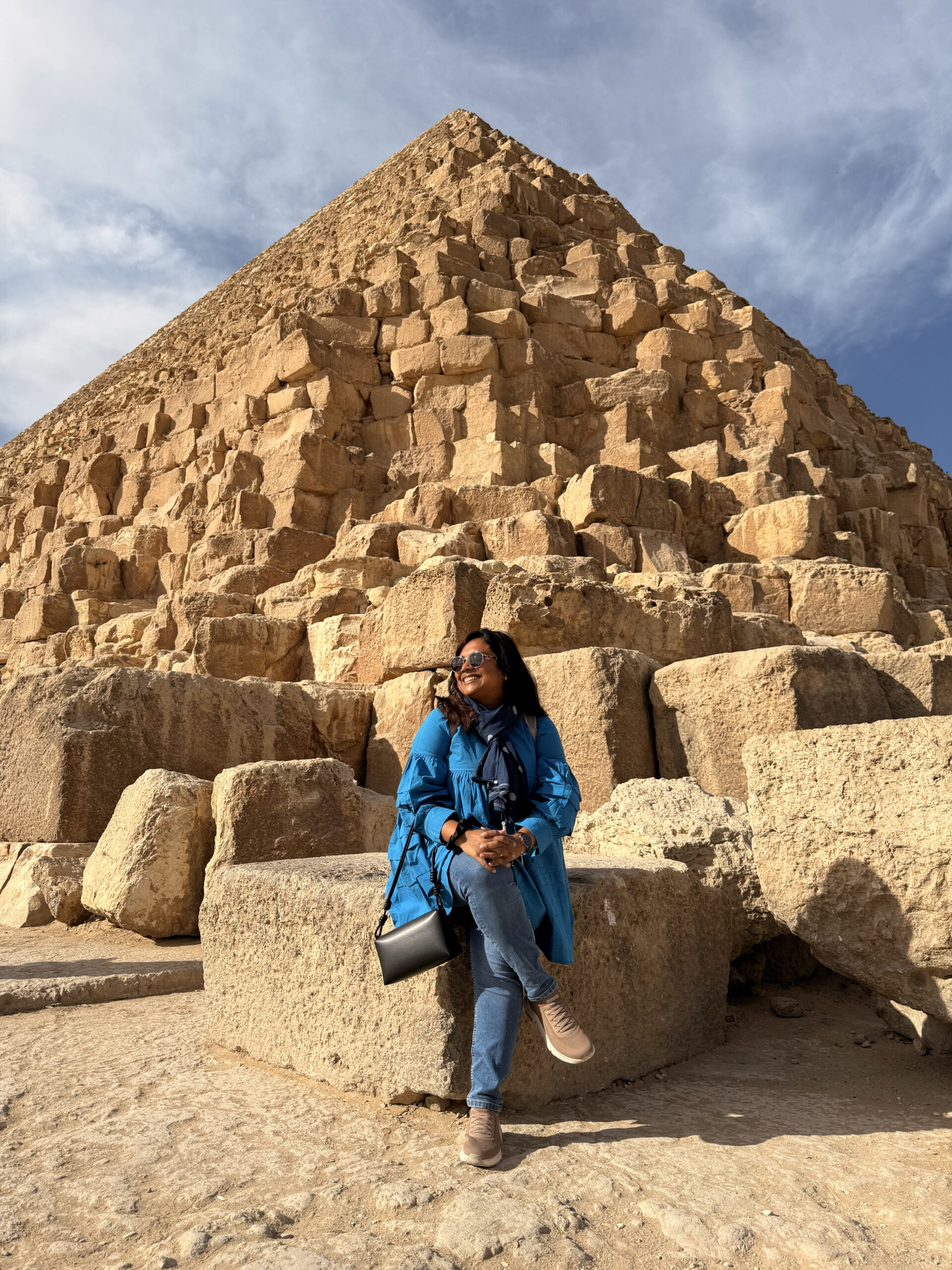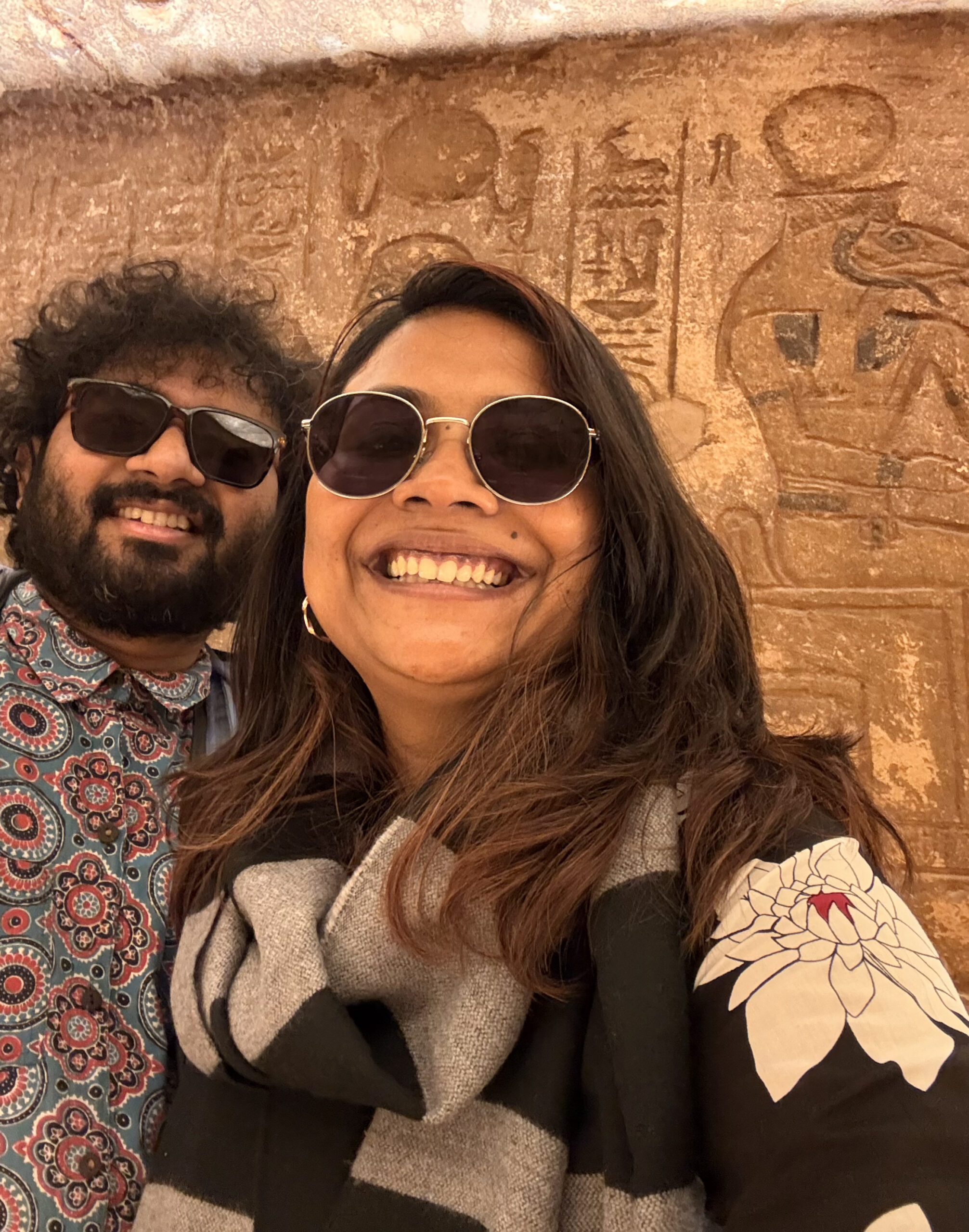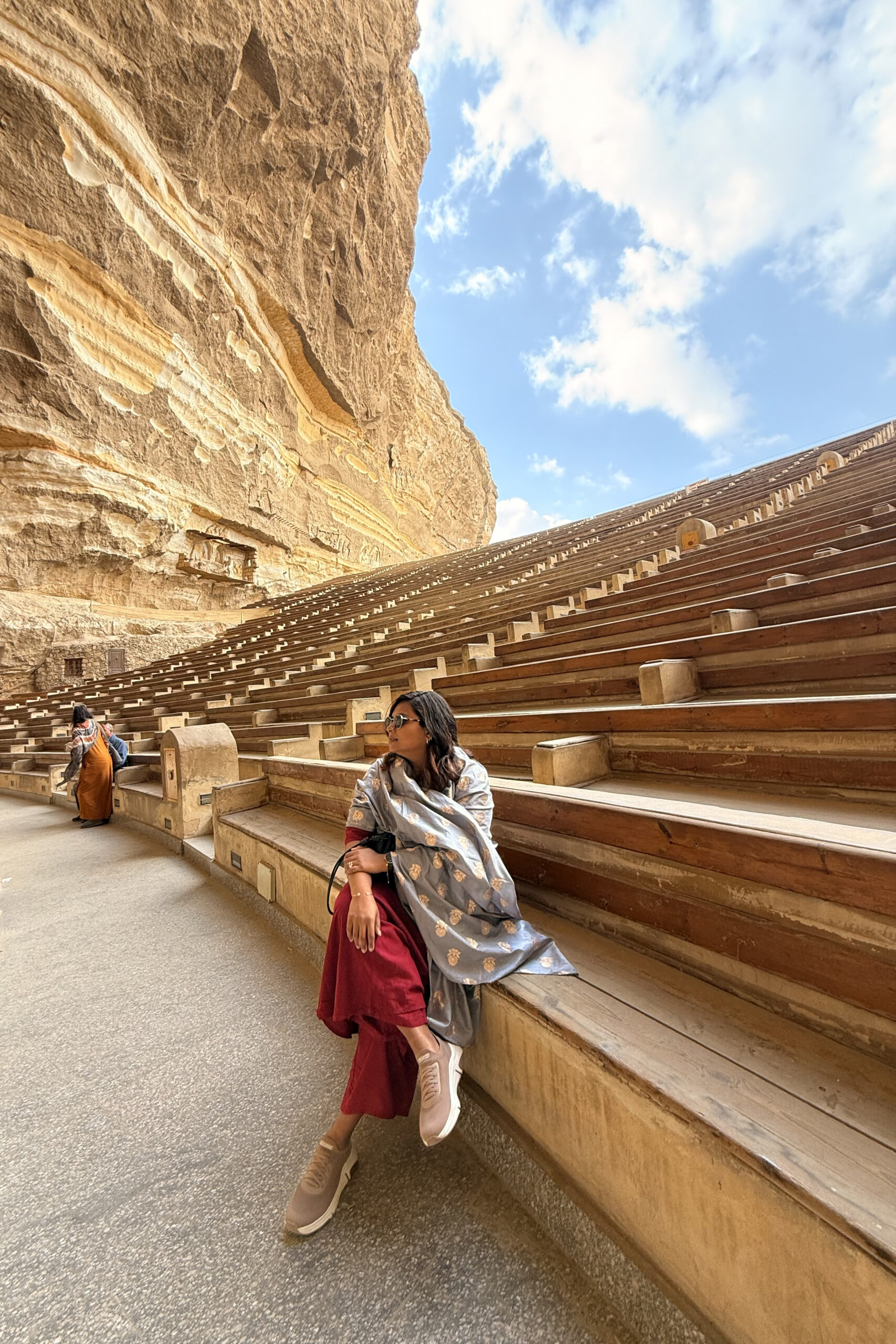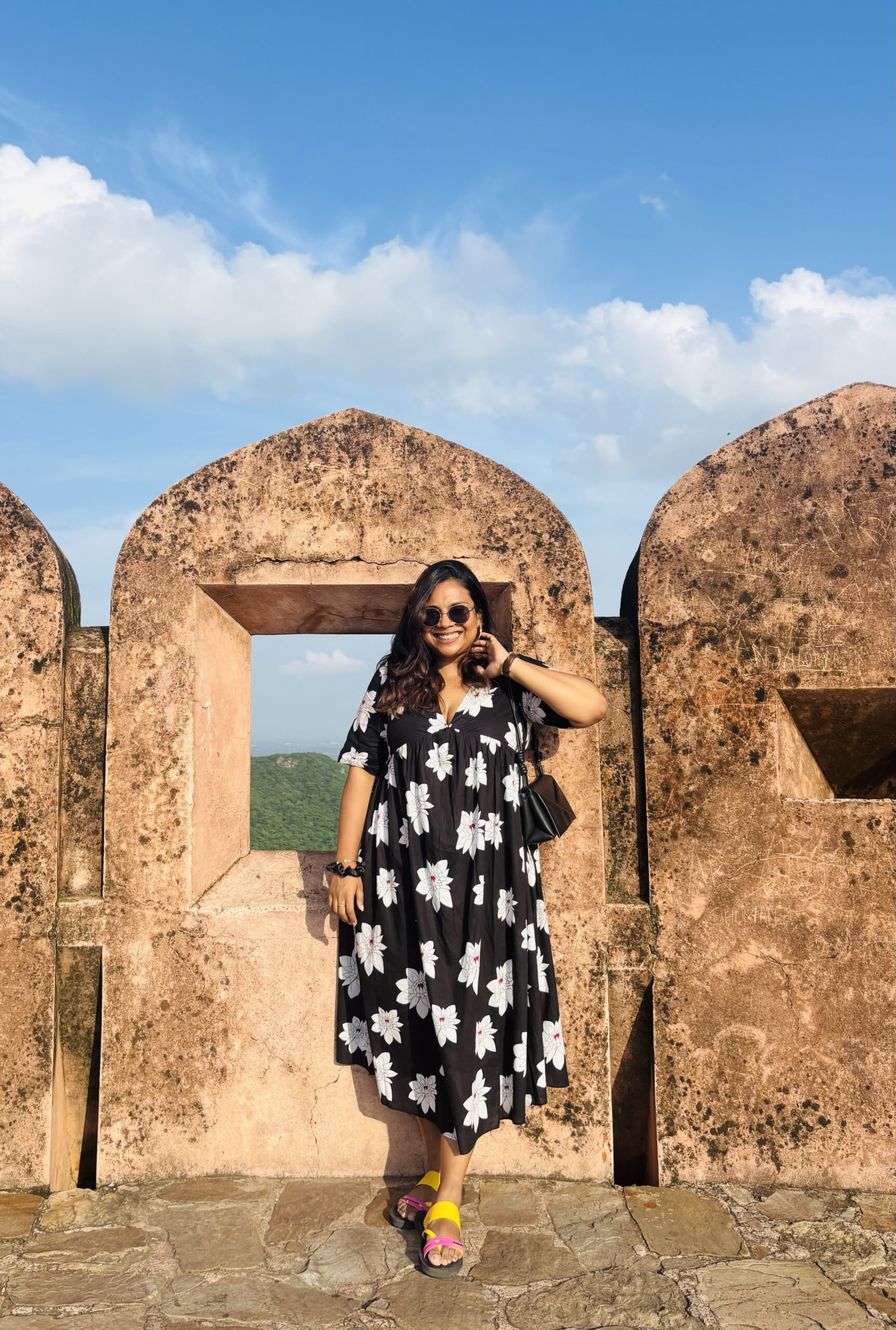

Best Time to Visit Egypt | A Complete Guide
You might think that it’s always dry and hot in Egypt, but let me tell you that the country isn’t just that. Sure, it has its fair share of scorching summers, especially in the southern parts, but there’s so much more to the climate here than endless heat.
When I visited Egypt in December, I was genuinely surprised by how pleasant the weather was. The warm sun during the day made exploring temples and pyramids enjoyable, and the cool evenings were ideal for sipping sahlab (a traditional milk-based drink) by the Nile or strolling through the ancient streets of Luxor and Aswan. The skies were clear, the air felt fresh, and it never got unbearably hot.
Depending on when and where you go, Egypt can feel different. So if you’ve always pictured Egypt as a sunbaked land with no escape from the heat, think again.
When is the best time to visit Egypt?
Spanning from the Mediterranean Sea in the north to the Sudanese border in the south, Egypt’s weather can vary depending on the time of year and where you’re headed.
Generally, Egypt has a desert climate with hot summers, mild winters, and very little rainfall. Temperatures in the summer can easily soar above 40°C in Upper Egypt (Luxor, Aswan), while winters are cooler and much more comfortable for sightseeing. On average, daytime temperatures range between 20°C and 30°C, depending on the season.

Winter Season (October to February):
This is, hands down, the best time to visit Egypt, especially if you’re planning to explore its historical sites. The weather is pleasant, even in the desert regions, making it ideal for long walking tours, Nile cruises, and exploring temples without the scorching sun. I visited in December and absolutely loved how perfect the days were – warm enough for light clothing and cool enough to sleep without air conditioning.
Summer Season (May to September):
Expect intense heat, especially in southern Egypt. Cairo and the coastal cities, such as Alexandria, are slightly more bearable, but Upper Egypt can be extremely hot and dry. If you’re visiting during this time, plan your outdoor activities for early morning or late evening, and stay well-hydrated.
Best months to visit Egypt, depending on the crowd:
Shoulder Months (March, April, and October):
These months are also a good time to visit, especially if you want to avoid the tourist rush while still enjoying relatively mild weather.
Peak Travel Season (December to February):
This is when most tourists visit, especially over Christmas and New Year. Expect higher prices for hotels and tours, with rates increasing by 25–35%, particularly around holidays and school breaks.
Off-Peak Season (May to September):
This is when you’ll find fewer tourists and better deals on hotels and flights. However, keep in mind the heat, especially if you plan to visit southern Egypt or spend time outdoors.
Choosing when to go depends on your comfort level with the heat and the type of trip you’re planning. For first-timers, the cooler months make for a much smoother and more enjoyable experience.
When is the best time to visit the pyramids of Egypt?
If seeing the Pyramids of Giza is at the top of your Egypt itinerary, then timing your visit well makes all the difference. It’s the same for exploring the ruins of Saqqara, Memphis and Dashur. Trust me, you don’t want to be wandering around these massive ancient structures under the blazing summer sun, when temperatures can shoot up into the mid-to-high 30s°C. It gets exhausting quickly, and there’s not much shade around.
The winter months, especially December to February, are much more comfortable. Daytime temperatures typically range from 18 to 20°C, which is ideal for walking around the site and taking your time to absorb the history. However, keep in mind that evenings can get surprisingly chilly, so it’s a good idea to carry a light jacket.
That said, this is also peak season, and group tours are common during this time, so expect more crowds, especially mid-morning onwards. If you’re looking for a quieter experience, March and October are great alternatives. The weather is still pleasant, and the crowds are thinner, which means you get more space (and better photo ops) at one of the most iconic landmarks in the world.
[Also Read: Exploring Egypt, Beyond the Pyramids]

Best Time to Visit Cairo
Cairo is intense, and in the best possible way. I’m saying this after spending a week in the Egyptian capital city!
It’s loud, layered, and full of life, from the timeless beauty of the Nile to the chaos of Khan el-Khalili. But when you visit this buzzing capital, it can really shape your experience.
The best time to explore Cairo is during the cooler months, from October to April. The weather during this period is much more manageable, with daytime temperatures ranging from 20°C to 28°C, depending on the month. This makes walking through the historic streets of Islamic Cairo or climbing up to the Citadel a lot more enjoyable.
December to February are particularly pleasant, especially for first-time travellers, but it’s also the peak season! If you’re hoping to skip the crowds while still enjoying mild weather, March and October are sweet spots. You get the best of both worlds: comfortable temperatures and fewer tour groups.
Summer (May to September), on the other hand, can be intense. Daytime temperatures regularly hit 35°C or higher, and combined with the city’s traffic and dust, sightseeing can feel more like a challenge than an adventure. However, if you’re accustomed to the heat or planning a quick stop en route to the coast or the south, it’s still manageable. I would suggest planning indoor activities for the afternoon (there are too many museums in the city that you can check out) and exploring the city either early in the morning or after sunset.
In short, if you want to walk, explore, eat, and soak in the energy of Cairo without the discomfort of extreme heat, late autumn through early spring is your best bet.
Best Time to Visit Aswan
While the pyramids are undoubtedly gorgeous, I somehow fell in love with the temples of Aswan, be it the Philae Temple or Abu Simbel.
The best time to visit Aswan is between November and March. This is when the heat becomes bearable and the days are pleasantly warm, perfect for sightseeing, boat rides, and wandering through open-air markets. Daytime temperatures during winter range between 23°C to 28°C, with cooler evenings that are still comfortable for outdoor dining or catching a felucca ride on the Nile.
If you’re planning to spend 48 hours in Aswan, this is the ideal season to make the most of your time, whether you’re exploring ancient temples or soaking in the calm of Nubian villages.
Summer in Aswan (May to September) can be intense. Temperatures often soar above 40°C, and even locals tend to stay indoors during the hottest part of the day. So, unless you’re used to extreme heat or have plans that revolve mostly around air-conditioned spaces, it’s best to avoid this period.
The shoulder months, October and April, are also great options. They offer a balance between manageable weather and smaller tourist crowds, making them another good choice for a short trip, especially if you enjoy a mix of cultural sightseeing and relaxed exploration.
Best Time to Visit Alexandria
The best time to visit Alexandria is between October and April, when the Mediterranean climate is at its most pleasant.
During these months, the city enjoys mild, breezy weather with daytime temperatures ranging from 20°C to 26°C, perfect for walking along the Corniche, visiting the Bibliotheca Alexandrina, exploring historical sites like the Citadel of Qaitbay, or enjoying fresh seafood by the sea. This season offers a more comfortable and relaxed atmosphere, ideal for slow-paced cultural exploration.
Winter (December to February) can bring cooler days and occasional rain, something you won’t experience in most other parts of Egypt. While it’s not exactly beach season, this time of year adds a quiet charm to the city, making it great for visiting museums, cafés, and libraries without the crowds.
Summer (May to September) in Alexandria is warm, with average temperatures hovering between 28°C and 32°C, but it’s noticeably cooler than the rest of Egypt due to its coastal location. The sea breeze helps take the edge off the heat, but it’s also the busiest time for domestic tourism, as many Egyptians head to Alexandria for a seaside escape. Expect a lively local atmosphere and busier public spots during this period.
When is the best time to visit Egypt for diving?
Egypt’s Red Sea coast, especially around Hurghada and Sharm el-Sheikh, is a paradise for divers. With vibrant coral gardens, dramatic drop-offs, and over 1,200 marine species, it’s one of the top diving destinations in the world. Whether you’re a beginner or an experienced diver, the underwater world here offers an unforgettable experience.
The best time for diving in Egypt largely depends on what you want to see and how warm you like your water. For the clearest visibility and warmest sea temperatures, the months from June to September are ideal. This is also the prime season for spotting larger pelagic species like hammerhead sharks, oceanic whitetips, and manta rays, especially if you’re diving around the Brothers Islands, Daedalus Reef, or more advanced sites accessible from liveaboards.
Hurghada and Sharm el-Sheikh both offer excellent diving conditions year-round, but spring (April–May) and autumn (October–November) bring a balance of good visibility, pleasant water temperatures, and fewer tourists. These are great months if you want to avoid the summer heat while still enjoying rich marine life.
Winter months (December to February) are cooler, both above and below the surface. While diving is still possible, you’ll likely need a thicker wetsuit, and some marine species are less active during this time.
In short:
- June to September: Best for warm water and big marine life
- April–May and October–November: Great visibility and comfortable conditions
- December to February: Quieter but cooler season for diving
Timing really does matter when planning a trip to Egypt. It’s not just about avoiding the heat; it’s about giving yourself the space to truly enjoy the country. From walking around the Valley of Kings in Luxor to watching the sunset over the Nile in Aswan or diving into the crystal-clear waters of the Red Sea, the season you choose can make all the difference.
I’ve been there, and trust me, visiting during the cooler months made every experience more meaningful. I wasn’t rushing through sites or hiding from the sun. I could take my time, soak in the stories, and really feel connected to the places I was seeing.
Egypt is an incredible destination, but planning your trip with the weather and season in mind lets you experience it at its best. Whether you’re going for history, nature, or just the adventure, a bit of thoughtful timing goes a long way. And if you’ve been to Egypt already, do let me know when you travelled there, or what you think is the best time to visit Egypt?
Disclaimer: This post contains a few affiliate links. If you happen to click on any of them and make a purchase, I might earn a small commission, at no extra cost to you. Just know that I truly appreciate your support if you choose to do so.
















